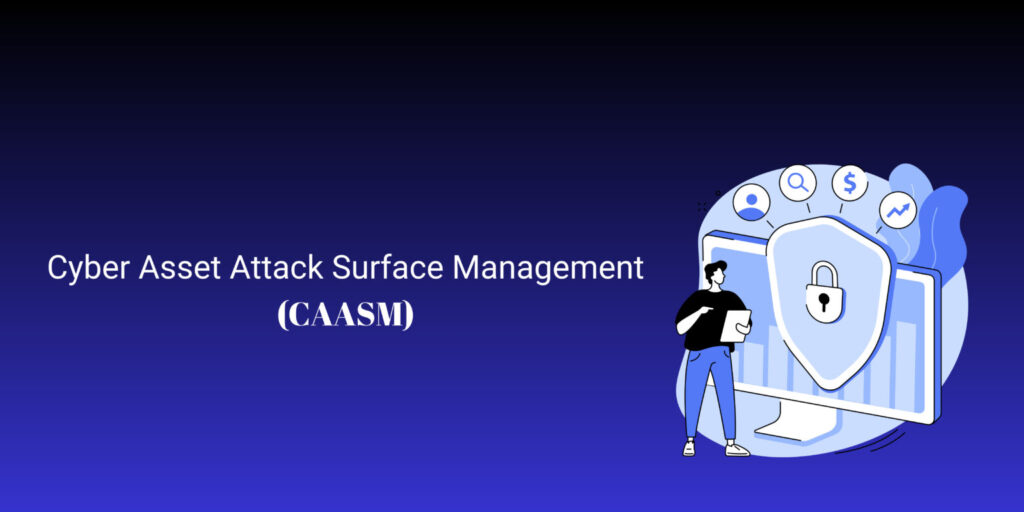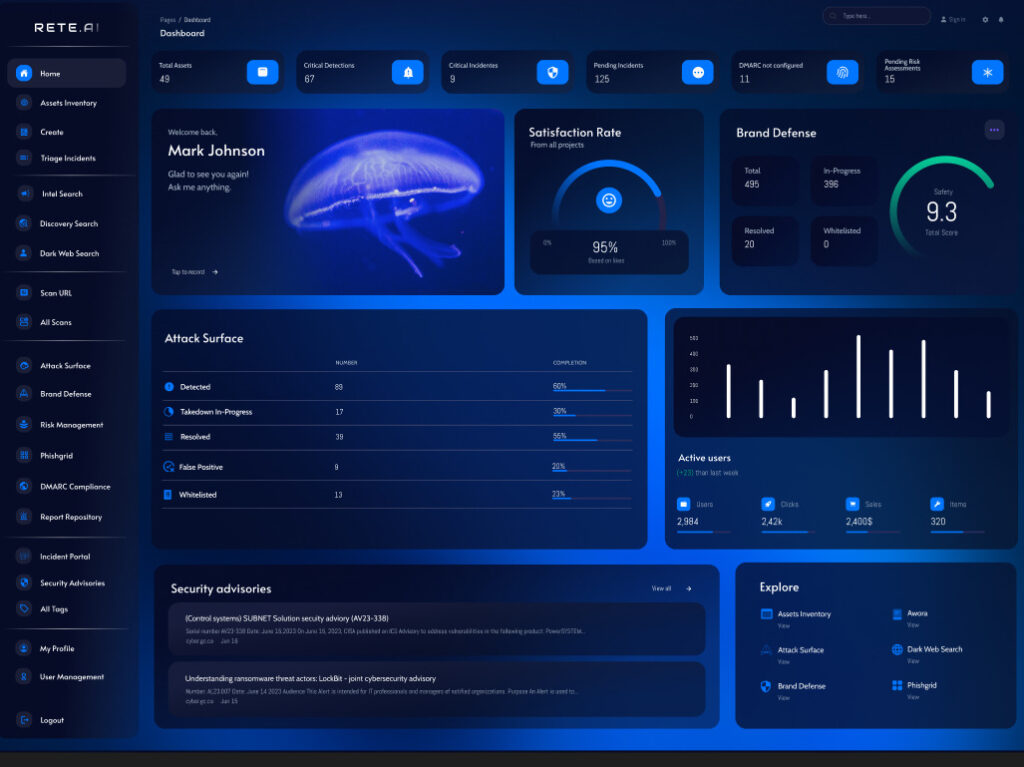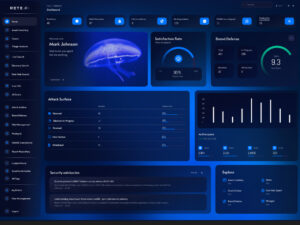Cyber Asset Attack Surface Management (CAASM) – A Comprehensive Guide in 2024

Within the complex network of contemporary cyber security, CAASM is essential. It’s a catch-all phrase for a variety of tactics and tools aimed at safeguarding the digital environment of a company. Let’s examine CAASM in more detail.
Table of Contents
What is Cyber Asset Attack Surface Management (CAASM)?
Cyber Asset Attack Surface Management (CAASM) represents a burgeoning field dedicated to empowering security teams to address challenges related to asset visibility and exposure effectively. This technology equips organizations with the capability to comprehensively visualize both internal and external assets, predominantly via API integrations with current tools. It facilitates the querying of aggregated data, pinpointing vulnerabilities, and identifying lapses in security measures, thereby enabling timely remediation of detected issues.
| CAASM Tool | Key Features | Specialization |
|---|---|---|
| Hunto.ai | – Unified External Cyber Security Platform – Wide elimination coverage on platforms – Efficient scaling of remediation | External cyber security with a focus on comprehensive threat management and efficient remediation processes. |
| JupiterOne | – Graph-based data model – Deep insights into asset relationships – Comprehensive visibility and security management | Cyber asset management with an emphasis on understanding asset relationships and dependencies. |
| Axonius | – Comprehensive asset inventory – Device discovery – Policy enforcement across IT, security, and operations | Cybersecurity asset management focusing on asset inventory and device compliance. |
| Wiz | – Cloud-centric visibility – Non-intrusive scanning – Proactive vulnerability and risk assessment | Cloud security, offering extensive visibility and assessment capabilities for cloud environments. |
| Tenable.io | – Continuous visibility – Vulnerability management – Security for cloud, IT, and IoT assets | Vulnerability management with a broad view across cloud, IT, and IoT environments. |
| Qualys | – Cloud-based security solutions – Asset discovery and compliance monitoring – Threat protection | Cloud-based asset discovery, compliance, and security across on-premises, cloud, and hybrid setups. |
| CrowdStrike Falcon | – Endpoint protection – Asset discovery – Vulnerability management | Endpoint security with added capabilities for asset discovery and vulnerability management. |
| Orca Security | – Agentless cloud security – Deep scanning of cloud assets – Vulnerability and misconfiguration coverage | Cloud-native security, focusing on agentless scanning and comprehensive coverage of cloud vulnerabilities. |
The Importance of CAASM in Modern Cybersecurity
In today’s digital age, where cyber threats evolve rapidly, the need for CAASM has never been more crucial. It’s not just about protecting data; it’s about safeguarding the integrity of our digital infrastructures. As connectivity expands, so does the attack surface, making comprehensive management vital to any cybersecurity program.
What is Attack Surface?
The concept of an attack surface is central to understanding CAASM. It refers to all the possible points where an unauthorized user can try to enter or extract data from your network. This surface is not static; it evolves as new technologies and access points emerge.
The Components of a Digital Attack Surface
A digital attack surface comprises various elements, each presenting unique challenges:
Physical Devices: Every device connected to your network, from servers to smartphones.
Network Ports: Open ports on your network that can be gateways for cyber attacks.
Software Systems: Applications and operating systems, each with their own vulnerabilities.
Data Storage: Locations where data is stored, including cloud services.
User Interfaces: Points where users interact with your systems, including websites and apps.
Human Factor: The role of human error or manipulation in security breaches.
You can also read – External Attack Surface Management
The Evolution of Cybersecurity

The field of cybersecurity has undergone significant evolution, transitioning from a reactive to a proactive approach. This shift is vital in the face of increasingly sophisticated cyber threats.
From Reactive to Proactive: The Shift in Cybersecurity Paradigms
Traditionally, cybersecurity focused on responding to threats after they occurred. However, this reactive stance is no longer sufficient. The proactive approach of CAASM involves anticipating and preventing attacks before they happen.
How Cyber Asset Attack Surface Management Fits into Modern Cybersecurity Strategies?
CAASM is a key component in contemporary cybersecurity strategies. It emphasizes:
- Continuous Monitoring: Keeping an eye on your assets at all times to detect and respond to threats quickly.
- Proactive Defense: Implementing measures to prevent attacks, rather than just responding to them.
- Risk Management: Understanding and managing the risks associated with each part of your attack surface.
- Integration: Seamlessly incorporating CAASM into your broader cybersecurity framework.
By understanding the basics of cyber asset attack surface Management, organizations can take a significant step toward fortifying their digital defenses against the ever-evolving landscape of cyber threats.
Asset Discovery and Management
A cornerstone of cyber asset attack surface management is the discovery and management of cyber assets. This process is pivotal in understanding and controlling the attack surface.
Techniques for Effective Asset Discovery
Effective asset discovery is a multi-layered process:
- Network Scanning: Utilizing tools to scan the network for devices and software.
- Cloud Asset Discovery: Identifying assets hosted on cloud platforms.
- Shadow IT Detection: Uncovering unauthorized IT systems and software in use.
- IoT Device Discovery: Locating and cataloging Internet of Things devices connected to the network.
Top 8 Cyber Asset Attack Surface Management (CAASM) Tools.
When discussing leading CAASM (Cyber Asset Attack Surface Management) tools, it’s important to highlight solutions that have made significant impacts on the market by offering robust functionalities for managing and securing digital assets across diverse environments.
Hunto.ai
Hunto.ai stands out in the cyber security landscape for its robust approach to vulnerability management and compliance. The platform offers real-time monitoring and automated compliance reports, making it an ideal choice for organizations that must adhere to stringent regulatory standards. Its ability to swiftly identify vulnerabilities and ensure compliance positions it as a strong alternative for businesses focused on regulatory adherence.

Below we have highlighted a few points that are included in the services of Hunto.ai –
- Anti-Phishing & Anti-Rogue – Detects phishing/ rogue apps, fake domains, and fake social media accounts.
- Data Leak & Sensitive Info Exposure – Leakage of proprietary and confidential data leading to monetary and competitive loss.
- Dark Web Threats – Detection of Sensitive data and PII information available for Sale on the dark web.
- Takedown Service – Remediation of threats through take-down assistance.
JupiterOne:
Known for its ability to provide deep insights into cyber asset relationships and dependencies, JupiterOne helps organizations map, manage, and secure their cyber assets through a graph-based data model.
Axonius:
Axonius specializes in cybersecurity asset management, offering comprehensive asset inventory, device discovery, and policy enforcement across IT, security, and operational domains.
Wiz:
While primarily focusing on cloud environments, Wiz offers extensive visibility into cloud assets and vulnerabilities, facilitating a proactive approach to cloud security.
Tenable.io:
Tenable.io extends beyond traditional vulnerability management to provide a platform for continuous visibility and security of cloud, IT, and IoT assets across the enterprise.
Qualys:
Known for its cloud-based security and compliance solutions, Qualys offers asset discovery, network security, threat protection, and compliance monitoring across on-premises, cloud, and hybrid environments.
CrowdStrike Falcon:
While CrowdStrike is renowned for its endpoint protection, its platform also offers capabilities for asset discovery and vulnerability management, leveraging the cloud to secure workloads across the enterprise.
Orca Security:
Orca Security provides cloud-native asset visibility and security, offering deep scanning of cloud assets without the need for agents, and ensuring comprehensive coverage of vulnerabilities and misconfigurations.
Step-by-Step Guide to CAASM Implementation

Implementing CAASM requires a strategic approach that encompasses various aspects of an organization’s cybersecurity posture.
Assessing Your Current Cybersecurity Posture
The first step in cyber asset attack surface Management implementation involves a comprehensive assessment:
- Security Audits: Conduct thorough audits to understand current security measures.
- Gap Analysis: Identify discrepancies between current practices and CAASM requirements.
- Stakeholder Engagement: Involve key stakeholders to ensure organization-wide commitment.
Deploying CAASM Solutions: A Practical Approach
The deployment of CAASM solutions involves several practical steps:
- Selecting the Right Tools: Choose tools that best fit your organization’s needs, considering factors like scalability, usability, and integration capabilities.
- Defining Processes and Protocols: Establish clear procedures for asset management, risk assessment, and incident response.
- Integration with Existing Systems: Seamlessly integrate CAASM tools with existing IT infrastructure and cybersecurity solutions.
Key Features for Effective Cyber Asset Attack Surface Management (CAASM) Security
CAASM integrates seamlessly into cybersecurity frameworks, offering features that are instrumental in safeguarding digital landscapes:
- Comprehensive Asset Visibility: CAASM delivers an exhaustive inventory of all digital assets, ensuring that every component is accounted for and monitored.
- Vulnerability Identification: By continuously scanning for vulnerabilities across the asset landscape, CAASM helps identify potential security gaps before they can be exploited.
- Security Control Gap Analysis: It evaluates the effectiveness of existing security controls, highlighting areas that require enhancement or adjustment.
- Automated Remediation Workflows: CAASM facilitates the automation of remediation processes, enabling swift responses to identified vulnerabilities.
- Risk Management and Compliance: Through detailed assessments, CAASM aids in aligning security practices with regulatory requirements, thereby improving risk management and compliance postures.
Avoiding Common Pitfalls in Attack Surface Management
Common pitfalls can undermine the effectiveness of CAASM. These include:
- Neglecting Asset Inventories: Failing to maintain an updated inventory of all digital assets.
- Underestimating Insider Threats: Not considering the risks posed by internal actors.
- Ignoring Compliance Requirements: Overlooking regulatory requirements can lead to legal and financial repercussions.
The Role of AI and Machine Learning in CAASM
The integration of artificial intelligence (AI) and machine learning (ML) has revolutionized CAASM, offering more sophisticated and proactive approaches to cybersecurity.
Leveraging Technology for Enhanced Cybersecurity
AI and ML can greatly enhance CAASM capabilities:
- Automated Threat Detection: AI algorithms can quickly identify and categorize threats, far faster than humanly possible.
- Predictive Analytics: Machine learning models can analyze patterns and predict potential vulnerabilities and attacks before they occur.
- Behavioral Analysis: AI-driven systems can monitor user behavior to detect anomalies that may signify security risks.
Future Trends: The Next Generation of CAASM Solutions
As technology evolves, so does CAASM. Future trends include:
- Advanced Predictive Modeling: Leveraging more complex algorithms for nuanced threat prediction.
- Integration with Emerging Technologies: Incorporating blockchain, quantum computing, and IoT for more robust security.
- Automated Response Mechanisms: Developing AI systems that not only detect but also autonomously respond to threats.
CAASM Vs EASM
To understand the distinctions and complementary nature of Cyber Asset Attack Surface Management (CAASM) and External Attack Surface Management (EASM), it’s vital to break down their main features, benefits, and typical use cases. The following table provides a comparative analysis of CAASM and EASM, highlighting key differences and how they fit into the broader cybersecurity landscape.
| Feature | CAASM (Cyber Asset Attack Surface Management) | EASM (External Attack Surface Management) |
|---|---|---|
| Definition | Focuses on identifying, managing, and securing all known and unknown assets across an organization’s digital infrastructure. | Concentrates on identifying, managing, and securing external-facing assets and vulnerabilities that could be exploited by attackers. |
| Scope of Management | Encompasses both internal and external assets, including on-premises, cloud, and hybrid environments. | Primarily targets assets that are accessible from the internet, such as websites, web applications, and exposed services. |
| Key Objectives | To provide a comprehensive view of an organization’s cyber assets, assess their security posture, and mitigate risks associated with them. | To discover and mitigate exposures in an organization’s external attack surface before they can be exploited by attackers. |
| Benefits | – Holistic security posture management – Enhanced visibility into internal and external assets – Improved compliance and risk management | – Early detection of potential attack vectors – Reduction of the external attack surface – Enhanced protection against external threats |
| Typical Use Cases | – Asset inventory and management – Security and compliance assessments – Incident response and threat hunting | – External vulnerability assessments – Penetration testing – Digital footprint monitoring |
| Challenges | – Managing the complexity and scale of internal assets – Keeping the asset inventory updated | – Continuously monitoring the evolving external attack surface – Identifying shadow IT and unknown external assets |
Conclusion
Cyber Asset Attack Surface Management (CAASM) represents a significant advancement in the domain of cybersecurity, offering a comprehensive framework for organizations to protect their digital assets. This blog has delved into the various facets of CAASM, from its fundamental principles and implementation strategies to the integration of advanced technologies and best practices.
The journey through CAASM underscores the importance of a proactive, rather than reactive, approach to cybersecurity. In an era where digital threats are becoming increasingly sophisticated and pervasive, the need for a robust and dynamic defense mechanism cannot be overstated. CAASM provides just that – a methodical and strategic approach to identifying, managing, and securing the myriad of cyber assets that form the backbone of modern organizations.
You can also read – 6 steps to improve corporate cyber security
FAQs
Here are the frequently asked questions about cyber asset attack surface management.
What is the primary goal of CAASM?
The primary goal of CAASM is to provide comprehensive visibility and management of an organization’s cyber assets to protect against cyber threats.
How does CAASM improve security?
CAASM improves security by identifying, classifying, and managing digital assets, making it easier to detect vulnerabilities and mitigate risks.
Can CAASM work with existing security tools?
Yes, CAASM solutions often integrate with existing security tools through APIs to provide a consolidated view of assets.







